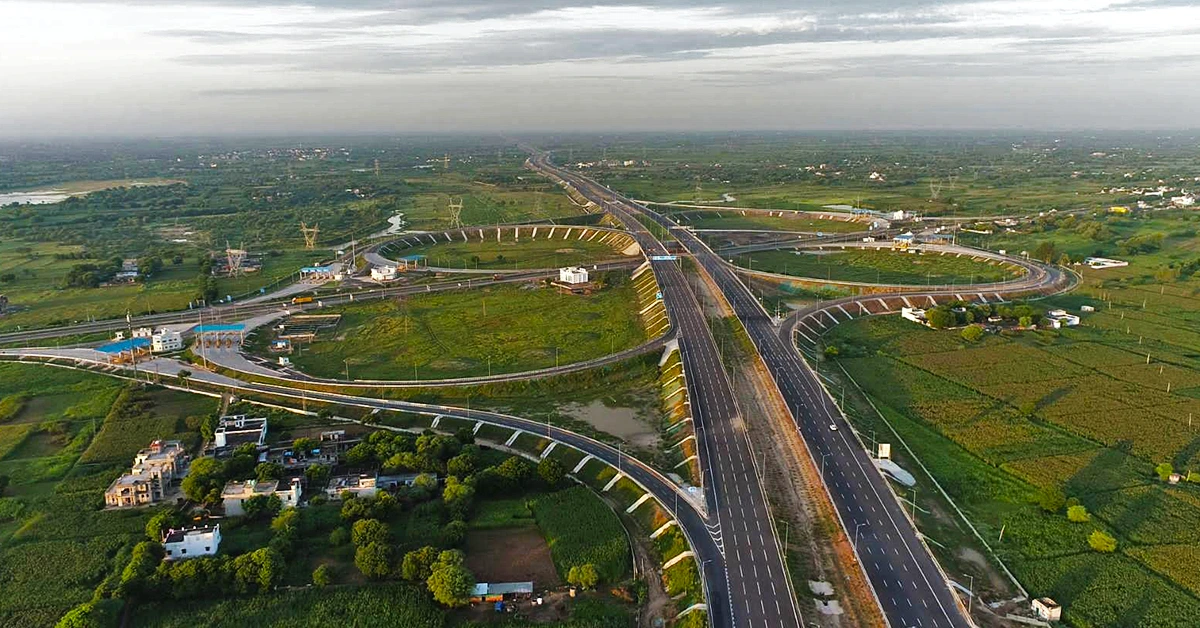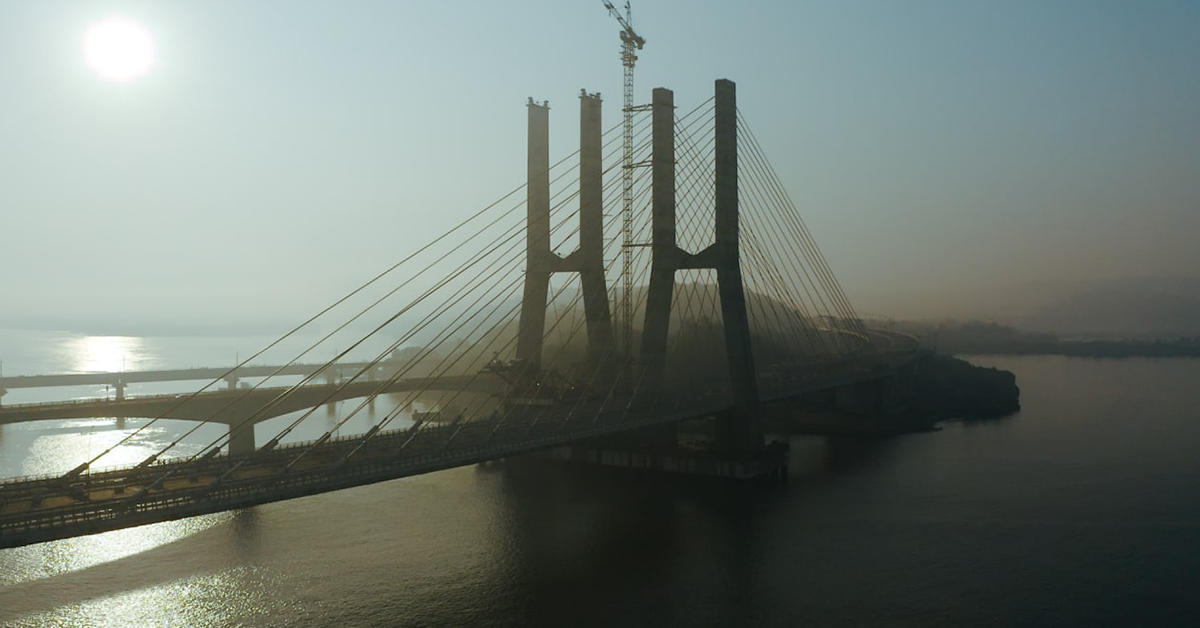The Bogibeel bridge over the Brahmaputra will boost defence logistics along the China border and increase the economic activity of the long-time neglected Northeast region.
Atal Setu - Mandovi River Bridge
Atal Setu or the Mandovi River Bridge, a dream project of Goa Chief Minister Manohar Parrikar is expected to decongest Panaji traffic and serve as a bypass for those who want to travel from north to south without entering Panaji.
Read Time: 4 minutes
click play to listen to the article
A dream project of Goa Chief Minister Manohar Parrikar, the Atal Setu or the third Mandovi river bridge was inaugurated on 27 January 2019 by Union Minister of Road Transport and Highways Nitin Gadkari. “How’s the Josh”, asked Manohar Parrikar at the inauguration ceremony, as he drew loud cheers from the crowd. Work on the 5.13 km bridge from Pundalik Nagar junction in Porvorim to Merces junction began on 14 June 2014 after Prime Minister Narendra Modi laid the foundation stone. Manohar Parrikar who followed up this project frequently with the then UPA government without any response from them, is credited with conceptualizing and overseeing its execution.
The Atal Setu is expected to reduce traffic at key entry points to Goa’s capital city. It was necessitated as the existing two bridges were considered inadequate as at least 66,000 vehicles ply on the two bridges every day on average. Apart from easing the pressure on the two existing bridges, the Atal Setu will also serve as a bypass for those who want to travel from north to south without entering Panaji, as it carries National Highway 66 (NH 66) over the tidal part of the Mandovi River. Estimates say that some 25,000 vehicles out of the daily aggregate of 66,000 would like to take this option.
Built by Larsen and Toubro at a cost of Rs 860 crore, the cable-stayed part of the 5.13 km-long and 21 m-wide bridge is 550 m, making it the third longest cable-stayed bridge in India. The viaduct has a length of 3.2 km and a width of 19.2 m. The bridge is 15 m higher than the existing two bridges. Two wheelers, three wheelers and bullock carts are prohibited from using the Atal Setu[2] due to its height of 30 metres (98 ft). The main bridge is 600 m in length with two end spans of 75 m and three interior spans of 150 m. The main bridge superstructure consists of a 21 m wide externally strutted segmented concrete box girder with a dual carriageway of 2 x 8.5 m with a 3 m wide median at the centre. The bridge has 88 high tensile strength cables in the state-of-art single place harp type cable stay system, and a real-time force monitoring mechanism. Around 13,000 tonnes of corrosion resistant reinforcement steel, 32,000 square metres of structural steel plates and 1,800 kilometres of high tensile pre-stressing strands have gone into making the bridge. At 2.5 lakh tonnes, the weight of the humongous structure is equivalent to 570 Boeing aircrafts. The bridge is made of 1 lakh cubic metres of high strength, high performance concrete enough to fill 40 Olympic size swimming pools. It is believed that 10 crore liters of water was saved by using a chemical to cure the cement instead of water. 1,100 workmen and over 50 engineers worked day and night to complete the project
All fixtures used on its facade are dustproof and waterproof, along with the ability to withstand strong impact. The illumination on Atal Setu’s facade has been made possible due to the use of special LED emitting lights that operate in a linear motion making color transitions happen smoothly. The fixtures on the ropes, top and bottom pylons and the sides are controlled from one central controller to ensure synchronization of the lighting. The streetlights used on Atal Setu are expected to have 100000 burning hours. Chief Minister Manohar Parrikar’s dream infrastructure venture, the Atal Setu is a joint venture between the GSIDC (Goa State Infrastructure Development Corporation) and Larsen and Toubro.
Tags: The New India, Infrastructure
Share this article:
Leave a Comment
Recommended For You
In a historic moment for India, Prime Minister Narendra Modi flagged off MV Ganga Vilas, the world's longest river cruise which makes a journey through India and Bangladesh, showcasing the rich heritage and culture of both countries.
India's first semi-high speed train, the Vande Bharat Express, was launched by Prime Minister Modi on 15 February 2019. The train offers Indian travelers a myriad of superior amenities and provides passengers with aircraft like travelling experience.
The Bengaluru-Mysore Expressway is a testament of Modi government's commitment to improving transportation infrastructure in the country. Improved connectivity between Bengaluru and Mysore is likely to lead to increased business opportunities and tourism in the area.
Fast-tracked by Narendra Modi, besides supporting the Armed Forces, the Atal Tunnel is destined to play a defining role in the future development of the region.
India’s longest expressway — the Delhi Mumbai Expressway is India’s quantum leap into the future, displaying Narendra Modi's resolve towards building a New India. Modi government’s emphasis on building an excellent road infrastructure as an engine of growth, development and connectivity in the New India shall bring opportunities, growth and →Read More →
India's widest and second largest cable-stayed bridge in India, the Zuari bridge in Goa will enhance the economic activity of the state.












